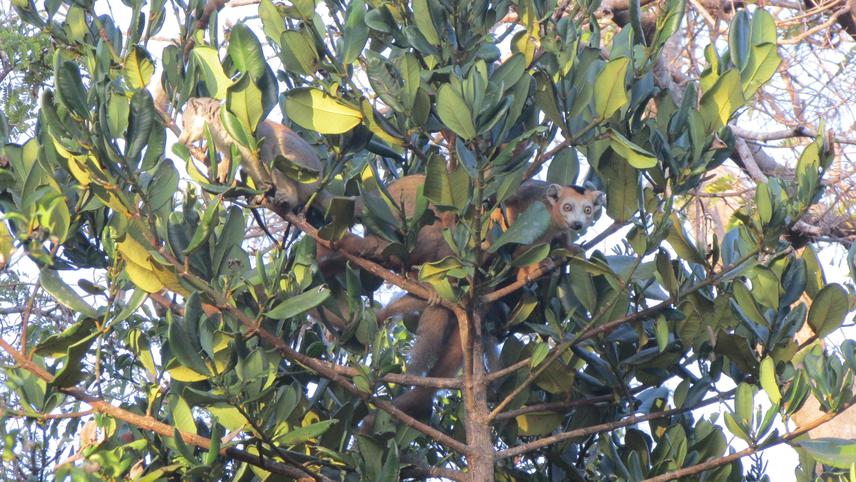Social media featuring the project.
Bobaomby 2013
30 Jan 2013 Bobaomby, Madagascar, Africa Ecotourism | Communities
Enhancing Community-Managed Conservation and Ecotourism in Bobaomby Area, the North Tip of Madagascar II
Enhancing Community-Managed Conservation and Ecotourism Project in Bobaomby Area, the Northern Tip of Madagascar III
The aim of this project is to help the community of Bobaomby find alternative sources of income to alleviate poverty and protect their highly bio diverse environment. Specifically, there is great potential for the people of this region to get involved in ecotourism so this project will assist a local association establish the skills they need to run their own project.

Eulemur coronatus.
The site of Bobaomby is found in the north tip of Madagascar and it is one of the few places where mangrove and primary dry deciduous forest exist in the far North of Madagascar. The mangrove forest in this region also helps protect a large area projected to be eroded by hurricanes and other natural disasters. One part of this project will produce a comprehensive description of the mangrove ecosystem: its boundaries, how many species of mangrove exist there, and its general state.
Bobaomby harbour several IUCN red list species including: Mantella Viridis frog, Leaf tailed gecko, the biggest chameleon (Furcifer oustaliti), the smallest chameleon (Brookesia minima) and threatened butterfly (Pharmacofagus). The region of Bobaomby is also known as habitat of Crowned Lemurs (Elemurcoronatus); Sanford Brown Lemur (Elemur sanfordi).These Lemurs species are endemic in the north part of Madagascar. Habitat degradation and direct threats to species in this region are mainly due to resources extraction from land being cleared for cultivation, disturbance by zebu grazing, and cutting down trees for artisanal charcoal manufacturing to supplement income from low profits found with rice production. Thus, the major threats to these endangered species and habitat is due to villagers’ poverty and need for survival.
A complete data list of all family groups of fauna known in within the Bobaomby zone is the first part of the project but this will also serve the second part of the project which is to identify the best potential ecotourism site in the area. Additionally, because local participant will be hired to help collect biological information, this experience will provide them training to identify and learn about the endemic fauna and flora.
We will also use different conservation approaches including raising environmental education and awareness in primary schools and secondary school in the region. This will involve not only students but teachers and parents, therefore the whole local communities will be involved with learning about the unique species around them. A mini conference and a workshop will be held in order to maintain political support for the project and officially launch the ecotourism project for the benefits of the villagers. The ecotourism project is a pilot project and will be based on building capacity in local communities, and consists of training locals in species names, creating trails and improving languages guest welcoming skills.
The project aims to build awareness in communities in the area to have larger vision concerning alternative source of income and possible activities that could enable them to have better life and simultaneously preserve their environment from degradation. The goal is to see the Bobaomby area as part of important protected and sustainably used area in Madagascar while simultaneously helping communities get income independence through their resources heritage.
Social media featuring the project.
Bobaomby 2013